EV updates
India’s New EV Policy: A Game Changer for the Passenger Vehicle Market and Auto Component Industry
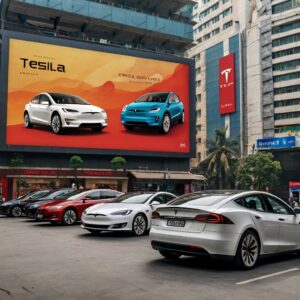 India’s automotive landscape is set for a dramatic shift with the introduction of a new Electric Vehicle (EV) policy. This policy is designed to intensify competition in the electric passenger vehicle (PV) segment and significantly benefit the domestic auto component industry. By lowering import duties and emphasizing localization, the government aims to attract global automotive giants like Tesla and Vinfast, thereby transforming the market dynamics. Analysts have weighed in on the potential impacts, indicating both opportunities and challenges for various stakeholders.
India’s automotive landscape is set for a dramatic shift with the introduction of a new Electric Vehicle (EV) policy. This policy is designed to intensify competition in the electric passenger vehicle (PV) segment and significantly benefit the domestic auto component industry. By lowering import duties and emphasizing localization, the government aims to attract global automotive giants like Tesla and Vinfast, thereby transforming the market dynamics. Analysts have weighed in on the potential impacts, indicating both opportunities and challenges for various stakeholders.
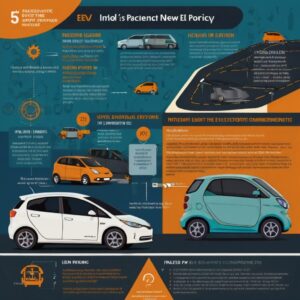
The New EV Policy: Key Highlights
The government’s EV policy is a multifaceted approach to boost the electric vehicle market in India. Here are the core aspects:
-
Reduced Import Duties:
- Automakers are allowed to import up to 8,000 EVs annually, priced at $35,000 or higher, at a significantly reduced import duty of 15%, down from the previous 70%.
- This concession is contingent upon the automaker committing to invest at least $500 million in local manufacturing over a specified period.
-
Localization Requirements:
-
The policy mandates a 25% domestic value addition (DVA) within the first three years and 50% within five years.
-
Companies must provide a bank guarantee to back their investment commitments, ensuring that the reduced import duties are justified by substantial local investment.
-
-
Market Penetration Potential:
-
Considering that India sold 42,000 luxury cars in 2023, the import allowance of 8,000 premium EVs per year at lower duties could lead to a market penetration of approximately 20%.
Implications for the Indian Market
The introduction of the new EV policy has several far-reaching implications for the Indian automotive market. Here’s a detailed look at these potential impacts:
Increased Competition in the EV Segment: The entry of international players such as Tesla and Vinfast is expected to significantly increase competition in the electric PV market. This new wave of competition will challenge domestic OEMs like Mahindra and Tata Motors, pushing them to innovate and improve their offerings. The mid-to-premium EV segment, in particular, is likely to see heightened activity, as these global brands bring in advanced technology and new models that appeal to Indian consumers.
Boost to Local Manufacturing and Auto Components: One of the primary objectives of the policy is to boost local manufacturing. By requiring a substantial investment in local production and setting stringent localization targets, the policy ensures that the benefits of global investments are shared with domestic industries. This focus on localization is expected to create significant opportunities for domestic auto component manufacturers, who will see increased demand for locally produced parts and advanced technology solutions.
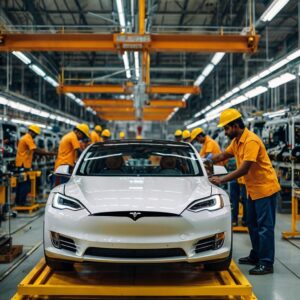
Consumer Interest and Market Dynamics: The policy is likely to attract considerable consumer interest, particularly for EVs priced at or below ₹20 lakh. Such vehicles are expected to appeal to a broad segment of the Indian market, driving significant growth in the electric PV segment. However, this increased competition could pose challenges for existing Indian manufacturers, who will need to enhance their value propositions to retain market share.
Expert Opinions on the New Policy
Analysts from various financial services firms have provided their insights into the potential impacts of the new EV policy. Here’s what they have to say:
-
Emkay Global Financial Services:
-
Emkay analysts believe that the policy ushers in a phase of both growth and uncertainty for the PV industry. The increased competition from international players will disrupt the market but also offer opportunities for growth. Domestic manufacturers will need to adapt quickly to remain competitive.
-
-
InCred Equities:
-
According to InCred analysts, the policy is particularly attractive for new EV makers like Tesla and joint ventures such as Mahindra-Volkswagen. However, it may pose a disadvantage to luxury brands like Mercedes and BMW, which currently import EVs at higher duties. These brands will need to rethink their strategies to compete effectively in the evolving market landscape.
-
-
Motilal Oswal Financial Services:
-
Motilal Oswal analysts suggest that the policy aims to foster an EV ecosystem and promote local manufacturing while protecting Indian OEMs operating below the $35,000 price point. Nevertheless, the policy could impact the sales of upcoming models from M&M and Tata Motors at the upper end of the SUV market and luxury vehicles from German brands.
-
-
Kotak Institutional Equities:
-
Kotak analysts believe that the immediate impact on the domestic market will be minimal due to the high price points of imported EVs and the annual import cap. However, the long-term competitive intensity is expected to rise, with domestic players needing to step up their game in the electric vehicle segment to compete with global entrants like Tesla.
-
The Road Ahead: Challenges and Opportunities
While the new EV policy opens up several opportunities, it also presents challenges that various stakeholders will need to navigate. Here’s a closer look at these aspects:
Opportunities for Growth and Innovation: The policy provides a fertile ground for innovation and growth. Domestic OEMs and auto component manufacturers can leverage the increased focus on localization to develop new technologies and improve production processes. This can lead to the creation of more affordable and efficient EVs, which will further drive market growth.
Challenges for Domestic Manufacturers: Domestic manufacturers will face significant challenges as they compete with well-established global brands. These challenges include the need to invest in new technologies, enhance production capabilities, and improve the overall value proposition of their EV offerings. Companies that can successfully navigate these challenges will emerge stronger and more competitive in the global market.
Potential Impact on Luxury Vehicle Market: The policy could disrupt the luxury vehicle market, particularly for brands that rely heavily on imports. Companies like Mercedes and BMW will need to adapt their strategies, possibly by increasing local production or forming new partnerships to remain competitive. This could lead to a reshaping of the luxury vehicle segment, with a greater focus on locally produced models.
Regulatory and Policy Considerations: The success of the new EV policy will depend on effective implementation and monitoring. Ensuring that companies meet their investment commitments and localization targets will be crucial. Additionally, the government may need to introduce further incentives and support measures to encourage more widespread adoption of EVs.
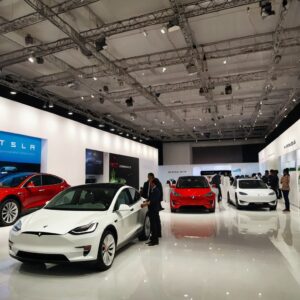
Conclusion: A Transformative Policy for India’s EV Market
India’s new EV policy represents a bold step towards transforming the electric passenger vehicle market. By attracting global manufacturers, boosting local production, and enhancing competition, the policy has the potential to significantly reshape the automotive landscape. Domestic auto component manufacturers stand to benefit greatly from the increased focus on localization and technological investments.
While challenges remain, particularly for domestic OEMs and luxury vehicle manufacturers, the opportunities for growth and innovation are immense. As the market evolves, stakeholders will need to adapt quickly to capitalize on the new dynamics and drive the growth of India’s EV ecosystem.
The future of India’s EV market looks promising, with the new policy setting the stage for a more competitive, innovative, and sustainable automotive industry. As global and domestic players gear up for this new era, consumers can look forward to a broader range of electric vehicle options, improved technology, and a more robust market overall.
Blog
Suzuki Access EV: A New Electric Scooter Set to Compete with the Honda Activa Electric
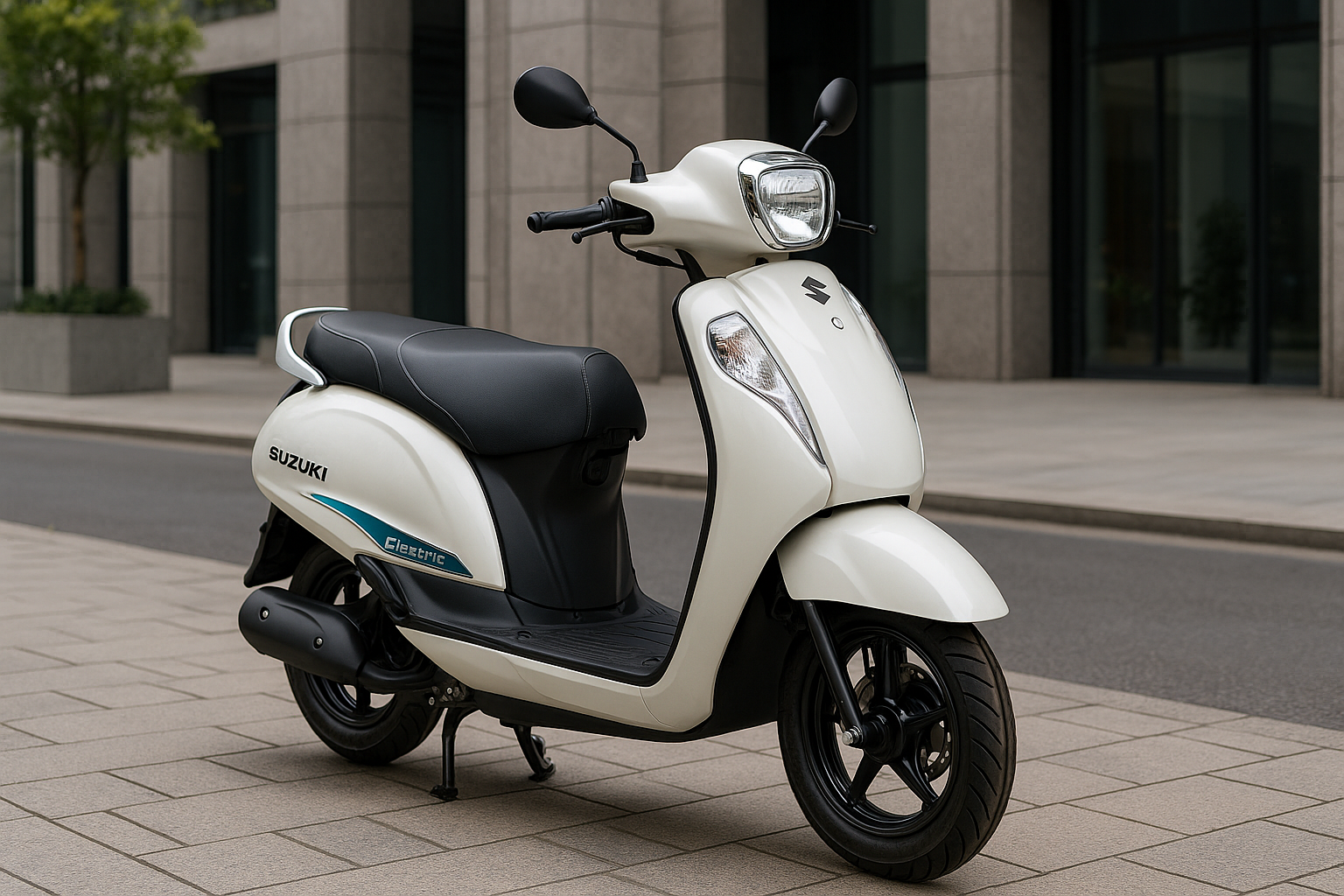
Suzuki Enters the Electric Scooter Market with the Access EV
Suzuki, a brand renowned for its reliable and fuel-efficient motorcycles and scooters, is now entering the world of electric mobility with its upcoming Suzuki Access EV. Expected to launch in 2025, this electric scooter is poised to become a significant player in India’s rapidly growing electric two-wheeler market. With the rise in demand for eco-friendly transportation, Suzuki aims to tap into the shift toward electric mobility with a scooter that combines familiarity, affordability, and modern electric technology.
India’s electric scooter market is heating up, with strong contenders like the Honda Activa Electric also making their debut. The Suzuki Access EV has big shoes to fill, but with its established reputation in the two-wheeler segment, Suzuki is well-equipped to make its mark.
Key Features of the Suzuki Access EV
1. Sleek Design and Comfort
The Suzuki Access EV will retain the classic design elements that made the Access 125 one of India’s most popular scooters, while incorporating sleek, modern changes suitable for the electric age. Expect a design that maintains the comfort and ease of use for which the Access series is known, but with enhancements to accommodate electric powertrain components.
The Access EV will come with a well-designed, comfortable seat, spacious footboard, and ergonomic riding posture, ensuring that it’s just as comfortable for long-distance commutes as it is for short city rides.
2. Battery and Range
One of the biggest concerns for any potential electric vehicle buyer is the range. The Suzuki Access EV is expected to come with a high-capacity lithium-ion battery that offers a respectable range of 80 to 100 km on a single charge. For daily city commuters, this range should be more than sufficient, offering the convenience of not needing to charge the scooter every day.
The Access EV will also feature quick charging capabilities, so riders can spend less time plugged into a charging point and more time on the road. Suzuki aims to make it as convenient as possible for users, whether they’re commuting or running errands.
3. Smart Features and Technology
In addition to its design and range, the Suzuki Access EV will come with a range of smart features to enhance the rider experience. Expect connectivity options that allow you to pair your phone with the scooter for features like real-time vehicle tracking, remote diagnostics, and battery status updates. LED lights, digital instrument clusters, and regenerative braking systems will also be part of the package, offering a smooth and high-tech riding experience.
How the Suzuki Access EV Will Compete with the Honda Activa Electric
The competition in the electric scooter segment is heating up with Honda’s Activa Electric, which is expected to launch around the same time as the Suzuki Access EV. Both brands have loyal customer bases, and their electric scooters will likely appeal to different segments of the market.
While the Honda Activa has been the undisputed leader in India’s scooter market, Suzuki brings a different set of strengths to the table. The Access EV will likely be priced competitively, giving it a strong chance of becoming a popular choice for those who want the reliability of Suzuki but are also looking for something environmentally friendly and cost-effective.
In terms of performance, both the Access EV and Activa Electric will be aiming for similar performance benchmarks, including good battery life and reliable city range. However, Suzuki’s reputation for durable scooters, combined with the added benefit of an electric motor, could give the Access EV an edge in terms of customer loyalty.
The Impact of Suzuki Access EV on the Electric Scooter Market
As the electric vehicle market in India continues to grow, the introduction of the Suzuki Access EV is a significant step forward. With government incentives for electric vehicles and growing consumer interest in eco-friendly commuting options, electric scooters are becoming a mainstream choice for many people.
The Suzuki Access EV is expected to be a game-changer in making electric scooters more accessible, affordable, and practical for the everyday commuter. By focusing on a user-friendly design, affordable pricing, and efficient battery technology, the Access EV will appeal to a wide range of customers, from those making the transition from petrol scooters to those buying their first electric vehicle.
The Future of Electric Scooters in India
The Suzuki Access EV marks a bold new step for the brand as it enters the growing world of electric mobility. With its solid reputation, affordable pricing, and smart features, the Access EV has the potential to be a strong competitor in the market alongside other popular electric scooters like the Honda Activa Electric.
As 2025 draws closer, we’ll be seeing more affordable electric options like the Access EV, which will make cleaner, greener transportation even more accessible for all. It’s an exciting time for the Indian electric vehicle market, and the Suzuki Access EV is ready to be a part of the future of eco-friendly commuting.
Blog
Hyundai Ioniq 5 Set to Challenge Kia EV9 in the Premium EV Segment
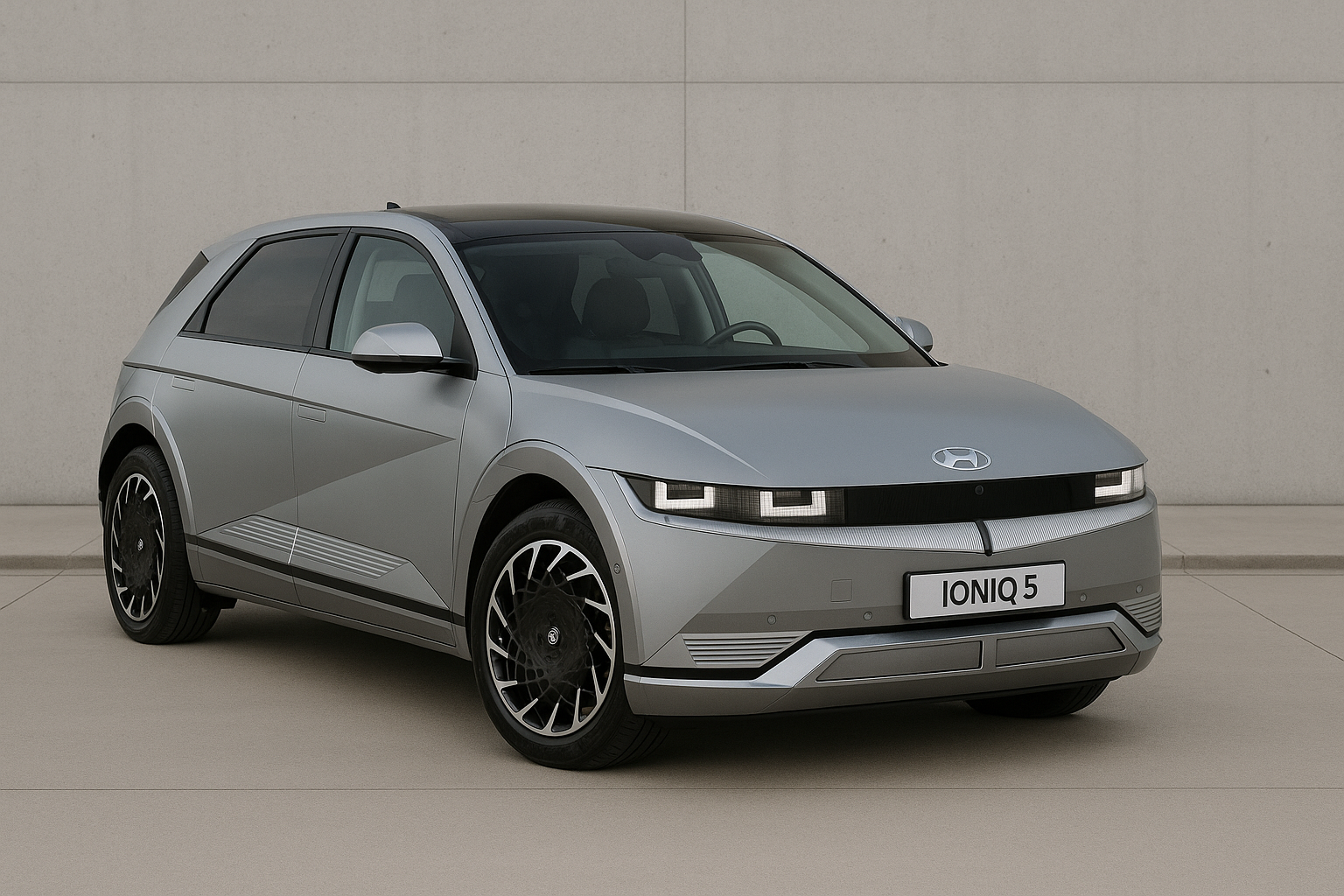
Hyundai is all set to make headlines again with the expected showcase of its flagship electric SUV — the Hyundai Ioniq 5. Designed to challenge popular models like the Kia EV9, the Ioniq 5 represents Hyundai’s commitment to futuristic, sustainable, and powerful electric mobility. With its bold design, long-range capabilities, and advanced features, the Ioniq 5 is not just an EV; it’s a statement.
A Revolutionary Step in Hyundai’s EV Journey
Hyundai has been a pioneer in bringing innovative and efficient vehicles to the market, and the Ioniq 5 is a clear reflection of that vision. Built on the E-GMP (Electric-Global Modular Platform), the Ioniq 5 offers enhanced performance, improved charging speed, and flexible interior design — ideal for modern-day EV enthusiasts.
Expected to launch with a targeted range of up to 631 km (ARAI certified) on a single charge, this electric SUV is built to go the distance, literally and figuratively. This puts it in direct competition with the Kia EV9 and other premium electric SUVs.
Futuristic Design Meets Sustainable Innovation
The Hyundai Ioniq 5 boasts a strikingly modern design that turns heads on the road. Its Parametric Pixel LED lighting, clean body lines, clamshell hood, and unique V-shaped front bumper give it a distinctive identity. The vehicle embraces both performance and aesthetics — making it a perfect blend of technology and lifestyle.
Inside, the Ioniq 5 continues to impress. The eco-friendly interior uses sustainable materials like recycled PET bottles, plant-based leather, and bio paint — all without compromising on comfort. Its flat floor architecture, flexible seating arrangement, and large cargo space make it a versatile choice for families and urban explorers alike.
Powerful Performance & Rapid Charging
Equipped with a dual-motor all-wheel-drive (AWD) system or a rear-wheel-drive (RWD) option, the Ioniq 5 can accelerate from 0 to 100 km/h in just 5.2 seconds. The power output is expected to be up to 305 PS depending on the variant.
One of the most impressive features is its ultra-fast 800V charging system. The Ioniq 5 can charge from 10% to 80% in just 18 minutes with a 350 kW DC fast charger. Even with a regular 50 kW charger, it offers excellent efficiency — ideal for Indian conditions where charging infrastructure is expanding rapidly.
A Smart and Connected Experience
The Ioniq 5 will come loaded with smart features like:
- Hyundai SmartSense ADAS (Advanced Driver Assistance Systems)
- 12.3-inch digital instrument cluster & infotainment display
- Augmented reality heads-up display
- Vehicle-to-Load (V2L) functionality to power external devices
Hyundai is likely to offer Over-the-Air (OTA) software updates, connected car services via Bluelink, and a top-tier warranty package to boost consumer confidence in EV ownership.
Why It’s Worth the Wait
As India moves towards electric mobility, vehicles like the Hyundai Ioniq 5 are setting benchmarks in performance, range, and sustainability. While pricing is yet to be officially confirmed, Hyundai is expected to price it competitively — making it an attractive alternative to the Kia EV9, Tesla Model Y, and Volvo XC40 Recharge.
Whether you’re an EV enthusiast or a future-forward buyer looking for style, performance, and green innovation, the Hyundai Ioniq 5 promises to deliver on all fronts.
Article By
Sourabh Gupta
Ev battery
Mahindra Expands EV Portfolio with the BE 07: A New Era of Electric Mobility
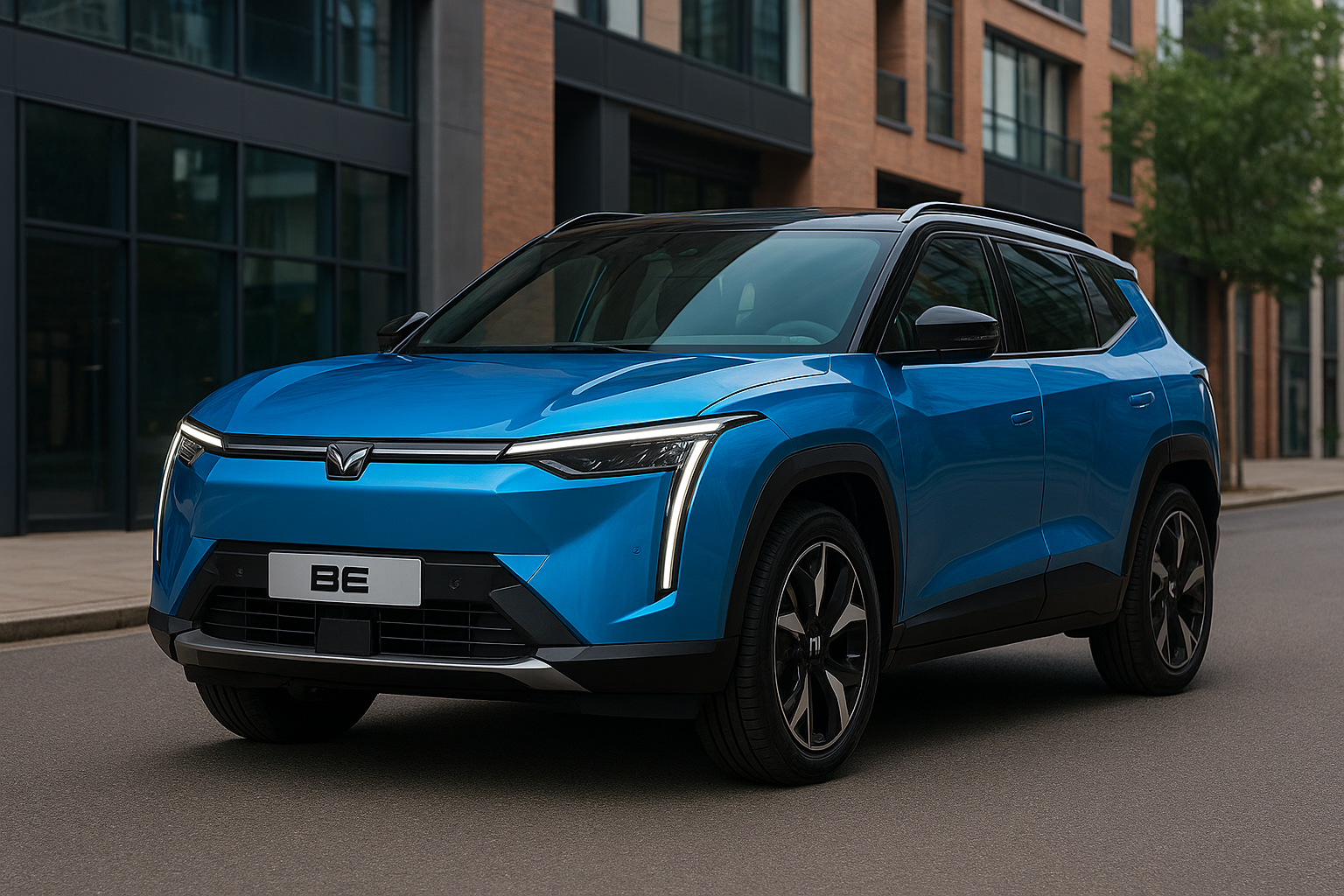
Mahindra’s New Electric SUV: The BE 07 is Here to Make a Splash
Mahindra’s been making some big moves lately, and if you’re a fan of SUVs, you’re going to want to pay attention. The BE 07, Mahindra’s upcoming electric SUV, is creating a lot of buzz in the auto world. Expected to roll out in 2025 or 2026, this electric ride is set to change how we think about electric vehicles (EVs) in India.
We all know Mahindra is famous for its tough, reliable SUVs. The BE 07 will be no different, but it’s got a twist — it’s electric. So, whether you’re looking for an eco-friendly car that still packs a punch or you’re just tired of rising fuel prices, this electric SUV might be exactly what you’ve been waiting for.
Why the BE 07 is Such a Big Deal
The BE 07 is more than just a regular SUV — it’s electric, which means it’s a step forward in Mahindra’s push to make green vehicles the norm. Here’s why people are so excited about it:
1. A Fresh, Modern Look
We all know Mahindra is famous for making rugged SUVs, and the BE 07 keeps that vibe alive. But it’s also got a more modern look that screams future-ready. With sleek lines and a sporty design, it’s got that futuristic appeal, but with all the muscle you’d expect from an SUV.
Whether you’re using it for city drives or heading out on a road trip, the BE 07 will stand out wherever you go.
2. Great Range for Long Drives
One of the things people are most worried about with electric cars is range anxiety — basically, how far can you go before needing a charge? Mahindra is addressing this with the BE 07, which is expected to give you a solid 400+ km on a full charge. That means you can take it on longer trips without the stress of constantly needing to find a charging station. Whether it’s a weekend getaway or a daily commute, this car’s range is more than enough.
And with fast-charging capabilities, you won’t be stuck waiting hours for a charge. Quick and efficient charging will make long drives a breeze.
Tech and Features: It’s Got Everything You Need
Electric cars are all about smart technology, and the BE 07 delivers. The car comes with all the modern features you’d expect from a high-end SUV, but with an electric twist. Expect a huge touchscreen infotainment system, smart connectivity, and advanced driver-assistance features to make your driving experience as smooth as possible.
3. Smart Features for a Smooth Drive
If you’re someone who loves having the latest gadgets in your car, the BE 07 will make you happy. It’ll have features like adaptive cruise control, lane-keeping assist, and emergency braking. These features not only make driving safer but also less stressful, especially on highways or during long drives.
The infotainment system will keep you connected to your music, calls, and navigation, so you’re never without what you need. Plus, all of this tech will be integrated into the car seamlessly, keeping everything easy to use.
Why It’s the Right Time for an Electric SUV
If you’ve been thinking about switching to electric, the BE 07 might just be the right moment. As fuel prices continue to climb, the cost of petrol and diesel is hitting us hard. But with electric vehicles, you’re looking at a much cheaper, more sustainable way to drive.
Plus, government incentives are making it easier than ever to buy an electric car. With affordable pricing and low charging costs, the BE 07 makes going green more accessible than ever before.
Who’s the BE 07 Perfect For?
This car is perfect for families, young professionals, or adventure lovers who want a car that’s tough, eco-friendly, and packed with features. If you love the idea of owning an electric SUV that’s both stylish and practical, the BE 07 is going to be a great fit. It’s spacious enough for your family, but with the kind of performance and luxury that will make every drive a pleasure.
What’s Next for Mahindra?
The BE 07 is just one of the many electric cars Mahindra plans to release. As the company continues to expand its EV portfolio, we can expect even more exciting models in the coming years. The BE 07 is just the beginning of Mahindra’s mission to revolutionize the electric vehicle market in India.
With Mahindra’s growing focus on electric mobility, the future of sustainable transportation in India is looking brighter every day. So, if you’ve been considering switching to an electric car, the BE 07 is worth keeping an eye on.
The Future of Driving Is Electric
The Mahindra BE 07 is shaping up to be an exciting, affordable, and eco-friendly option for anyone looking for an electric SUV. With great design, amazing tech, and a reliable range, it’s clear that Mahindra is stepping up its game when it comes to electric mobility.
If you’ve been thinking about making the switch to electric, the BE 07 could be the perfect vehicle for you. It’s affordable, practical, and it’s got everything you need to drive into a more sustainable future.
Article By
Sourabh Gupta
-
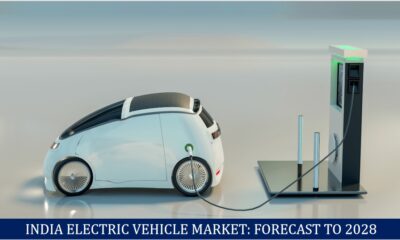
 Blog12 months ago
Blog12 months agoIndia’s Electric Vehicle Market Forecast to 2028 A Rapidly Growing Industry
-
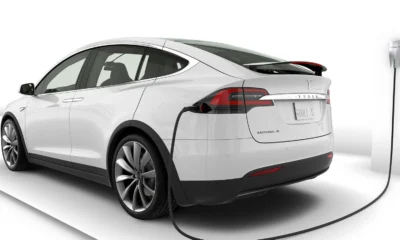
 Blog1 year ago
Blog1 year agoTop 10 Electric Vehicles of 2024: A Comprehensive Guide
-
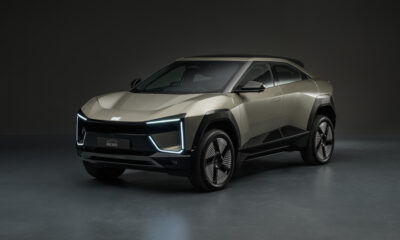
 Blog11 months ago
Blog11 months agoMahindra BE 6 An Intense Move toward the Fate of Electric Versatility
-
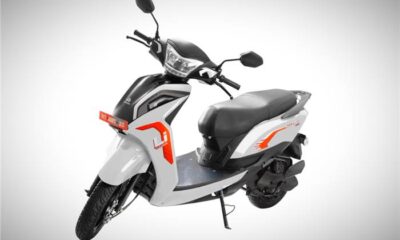
 EV news11 months ago
EV news11 months agoAmpere Magnus Neo Another Time of Electric Portability
-
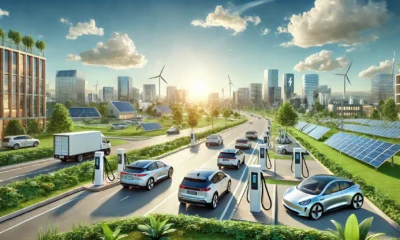
 Blog1 year ago
Blog1 year agoImpact of Electric Vehicles on the Environment and Pollution
-
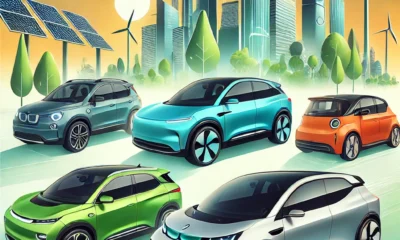
 Blog1 year ago
Blog1 year agoTop 5 best electric vehicles Under $30,000: Affordable Choices for 2024
-
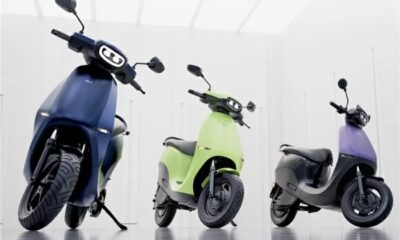
 EV news1 year ago
EV news1 year agoOla Electric Offers Massive Festive Discounts on Scooters Starting at ₹50,000
-
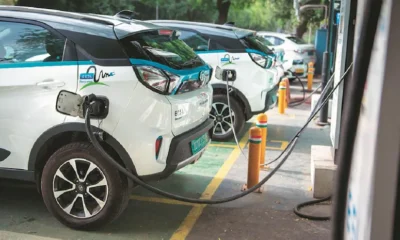
 EV news11 months ago
EV news11 months agoIndia’s EV Revolution Electric Cars to Outpace Petrol & Diesel in 2025




